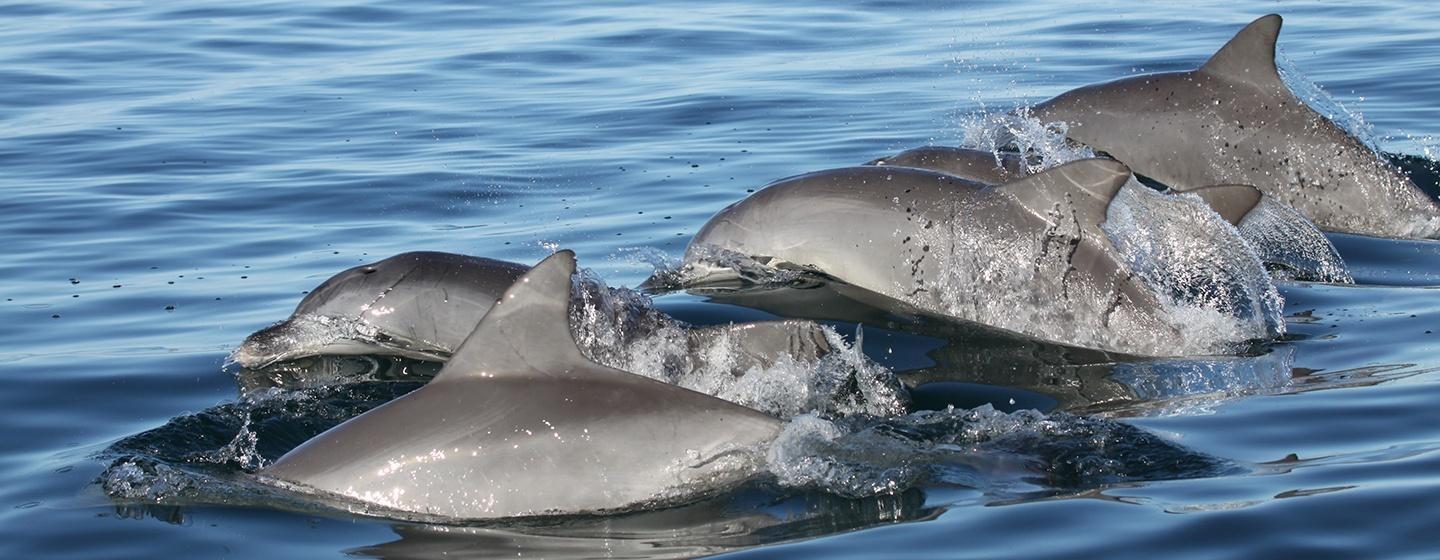Networking to Succeed - It’s Not Just for Humans


Let’s talk about networking.
In the business world, it’s defined as the process of establishing a mutually beneficial relationship with other businesses and potential clients or customers.
It’s so important for business success that career advisors suggest meeting four or five new people per week, as a way to grow and strengthen your network and exchange business information, ideas and support.
A new study by researchers at Duke University and Georgetown University reveals wild bottlenose dolphins also network in early life.
That’s right, dolphins under age 10 seek out peers and activities that could help them in adulthood.
The results were published in the journal Behavioral Ecology.
The study analyzed roughly 30 years of recorded observations for more than 1700 wild bottlenose dolphins in Shark Bay, which is off the coast of Western Australia. It’s a pretty remote area, and since the 1980’s, scientists have taken a boat out into the bay and recorded things like, sex, age and behavior of dolphins they’ve encountered.
It’s a valuable, long term data set that’s useful to study many dolphin traits, but for the current project, the team focused on the data for younger dolphins. That means from weaning to age 10. Scientists paid special attention to dolphins at ages three and four, when dolphins leave the protection of their mothers to venture off on their own.
Researchers wanted to understand the patterns younger dolphins follow when forming groups and “hanging out” with each other, especially since they noticed that these 3-4 year old dolphins live in ever-changing groups that come together, break apart, and reform in different combinations.
And much like human teenagers, scientists found that even though young dolphins constantly flit from group to group (as often as every ten minutes), they tend to spend more time with a few close friends.
And it’s not just because a couple of dolphins are sharing the same corner of Sharks Bay and happen to swim into each other.
“These relationships reflect true preferences,” said Allison Galezo, a biology Ph.D. student at Duke. “These differences suggest that the social lives of young dolphins may be shaped by the upcoming demands of adulthood.”
The data showed that males prefer to hang out with other males and females stayed with other females. But it was more than just guys hanging with guys and girls hanging with girls.
The data also showed that males and females tend to interact in different ways. Males were more likely than females to spend their time together resting or engaged in friendly physical contact: rubbing flippers, swimming close together and mirroring each other’s movements.
Females on the other hand, or other flipper, socialized less often. They spent almost twice as much time as the male dolphins foraging for fish.
Remember how younger dolphins leave their mothers around age three or four? Since a nursing mom needs more calories to produce milk and stay healthy, researchers believe young females may be practicing the foraging skills they will need later on.
Researchers speculate the young male dolphins may be practicing mating behavior. The data from 30 years ago shows groups of two or three male dolphins join forces to get fertile females alone and coerce them to mate. By the time they grow up, males will need those social skills to build and maintain alliances or miss out on the chance to get a girl.
“The juvenile period can be an opportunity to develop social skills that will be important in adulthood, without the high-stakes risks that go with sexual maturity,” Galezo adds.